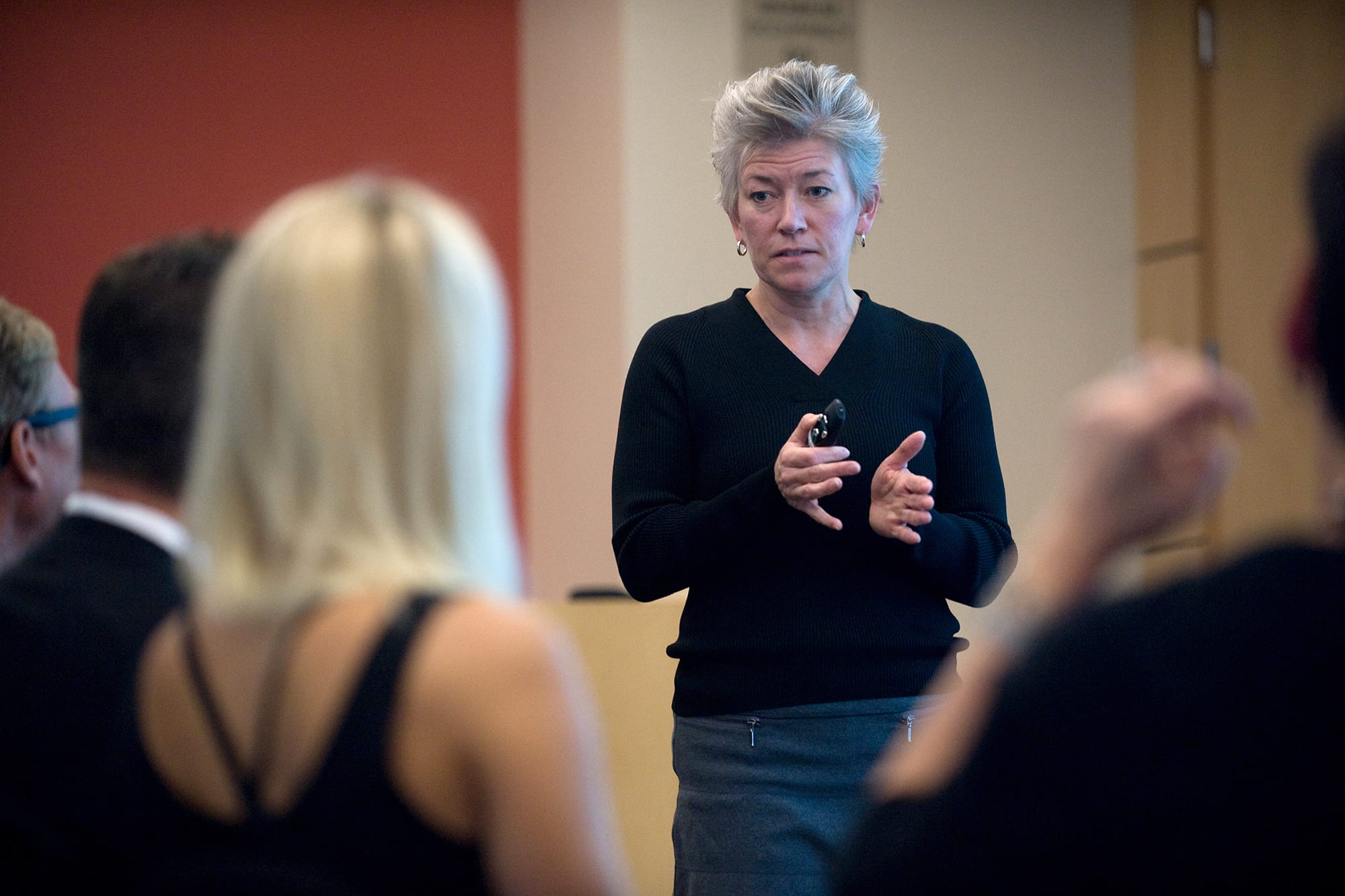Advancing breakthrough science
Sue & Bill Gross Stem Cell Research Center celebrates 10 years of innovation

This week, UCI celebrates 10 years of lifesaving innovation out of the Sue & Bill Gross Stem Cell Research Center. In this Q&A, center director Aileen Anderson discusses some key accomplishments and describes the importance of stem cell research – how it’s the key to fighting some of the most tragic illnesses, from neurodegenerative diseases such as Alzheimer’s and Parkinson’s to conditions such as blindness and the infectious disease of most concern today, COVID-19.
Why is stem cell research so important? Does it really play a role in fighting disease and helping create a healthier future?
The extraordinary potential of human pluripotent stem cells was immediately apparent when they first appeared on the scene in 1998. Pluripotent stem cells can be coaxed into becoming nearly any specialized cell type. But making that potential a reality required lots of hard work, and over the past decade, that work has been bearing fruit. Now we can see practical ways to take stem cells and mature them into highly functional cell types to treat injured or diseased organs or tissues.
How has stem cell research developed in the last 10 years?
Stem cell research has grown in both practical ways and in important new directions. We now know how to scale up stem cell production to create large numbers of cells for therapies. We have new sources of stem cells such as induced pluripotent stem cells, a technology that won the 2012 Nobel Prize and allows us to obtain stem cells that act like embryonic cells but are from adult cells. Another great new technology involves “organoids,” in which stem cells begin to organize themselves into tissues or organs.
What are a few of the common misunderstandings or myths about stem cell research?
The most common misconception is that all stem cells can do everything. Stem cells from early discarded embryos are different from stem cells derived from umbilical cord blood, which are both different from stem cells derived through genetic manipulation of adult skin cells. These cells are all quite different in their ability to grow, in their ability to mature into other cells and in their ability to be transplanted. But many people are marketing adult stem cells for unapproved clinical uses with justifications based on what only embryonic stem cells can do.
How would you characterize your center’s main achievements over the past decade?
The Sue & Bill Gross Stem Cell Research Center has accomplished the difficult task of building its own comprehensive program. We have a pipeline that goes from basic science studies on how stem cells work at the molecular level to the bioengineering level, where scientists explore how stem cells interact within the body to form tissues and organs. We also study how to apply these findings at the preclinical level, where the stem cells are tested in disease models prior to testing in FDA-approved clinical trials.
What are some of the most important stem cell projects currently underway?
The use of stem cells to treat the blinding disease retinitis pigmentosa is in its third and most advanced clinical trial. The use of stem cells to develop a therapy for the incurable Huntington’s disease is moving toward a clinical trial. And the use of various types of stem cells to repair spinal cord injuries has been pioneered at UCI. The addition of four new faculty will expand the development of our program in tissue and organ engineering.
How is the work at the Sue & Bill Gross Stem Cell Research Center contributing to the fight against COVID-19?
Our scientists are using their stem cell skills and technology to help in many ways. The UCLA-UCI Alpha Stem Cell Clinic is participating in several clinical trials of new therapies for COVID-19 sponsored by the California Institute for Regenerative Medicine. Our scientists are studying both new antiviral drugs that might be useful and the basic biology of the coronavirus to find possible targets. Our team is helping in other ways too: Our core lab team, led by specialist Christina Tu, has been providing virus transport kits for testing when supplies available to UCI Health are limited. These kits are used for virus tests in the UCI Health pathology laboratories headed by stem cell center member Dr. Edwin Monuki. Thus, our center has been a great contributor to UCI’s COVID-19 program.
What center priorities are you focusing on and what investment and support will be necessary for the next decade of stem cell research discoveries and achievements?
Scientific fields develop incrementally as we build upon the knowledge gained. When we step back, we can see the breakthroughs that have happened from the accumulated knowledge – but breakthroughs are hard to see while they’re happening and even harder to predict. We can anticipate two broad themes in the coming years: First, our early successful clinical trials will move on to FDA approval and widespread use, while many more preclinical studies will be ready for human testing in clinical trials. The second theme is that our basic science and tissue engineering programs will move ahead in defining new approaches for using stem cells to repair or replace diseased or damaged tissues. The future of this field is bright and filled with promise.